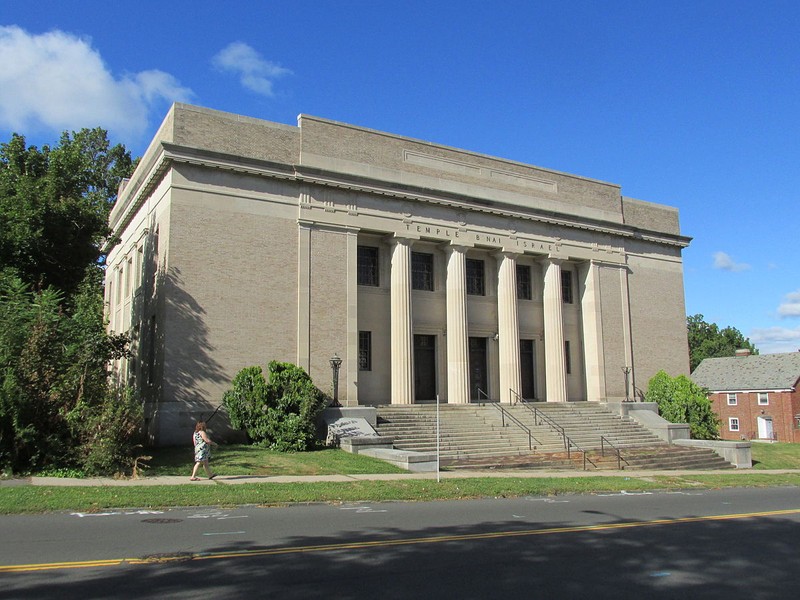Temple B'Nai Israel
Introduction
Text-to-speech Audio
Originally built as a Masonic Hall in 1927, this striking building was sold in 1940. Its new owners, the Jewish congregation Aheyu B’Nai Israel (Brethren Sons of Israel), converted it into a synagogue. The congregation had been active since 1889. Though initially Orthodox, it became Conservative in 1924, prompting some members to leave and form their own congregation (Tephereth Israel). In 2007, the synagogue closed. The building is now home to New Hope at Calvary Church.
Images
Temple B'Nai Israel

Backstory and Context
Text-to-speech Audio
Designed by Walter P. Crabtree (1873-1962) shortly before the Great Depression, this building served for only around a decade as a fraternal lodge. Lack of adequate funds led the Masons to sell. Its grand, imposing aesthetic worked just as well as a synagogue. As David Ransom explains, this 1927 structure combined Neo-Classical and Beaux-Arts elements, as befitting a fashionable building of its time: "Albert Kahn, the famed architect of automobile factories, designed a building
quite similar to this one in Detroit in 1922 for Beth El. In the fashion of the times,
city halls, libraries, churches, Masonic halls, and synagogues all tended to look alike.
Temple B'Nai Israel, New Britain, is a fine, well-executed example" (p. 18).
Crabtree was an active local architect, also responsible for designing the Francis H. Holmes House (New Britain) and the Universalist Church (West Hartford).
Crabtree was an active local architect, also responsible for designing the Francis H. Holmes House (New Britain) and the Universalist Church (West Hartford).
Sources
Image credit: John Phelan, https://commons.wikimedia.org/wiki/File:Temple_Bnai_Israel,_New_Britain_CT.jpg
Ransom, David. "Historic Synagogues of Connecticut." National Register of Historic Places, Multiple Property Documentation Form, U.S. Dept. of the Interior, NPS. 1995. Accessed November 26, 2018. https://npgallery.nps.gov/NRHP/GetAsset/NRHP/64500078_text.
Ransom, David. "Historic Synagogues of Connecticut." National Register of Historic Places, Multiple Property Documentation Form, U.S. Dept. of the Interior, NPS. 1995. Accessed November 26, 2018. https://npgallery.nps.gov/NRHP/GetAsset/NRHP/64500078_text.
